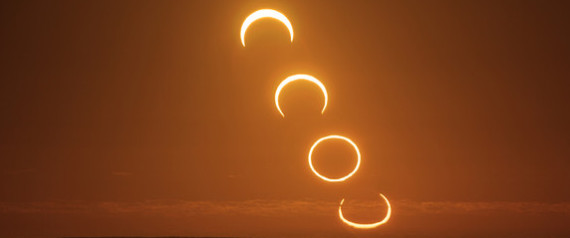
The Moon’s orbit about the Earth is not perfectly circular, so that at different times the Moon can be slightly closer or further away than usual. This composite shot shows the progress of an annular eclipse in May 2013. | Jia Hao/The National Maritime Museum
The sun will look like a ring of fire above some remote parts of the world next Tuesday (April 29) during a solar eclipse, but most people around the world won’t get a chance to see it.
Whereas lunar eclipses occur only when there’s a full moon, and solar eclipses only happen during a new moon. Half the world saw a lunar eclipse during the full moon on April 15. When a lunar eclipse occurs, it usually means there is also a solar eclipse at the preceding or following new moon.
Tuesday’s solar eclipse is known as an “annular” — rather than “total” — lunar eclipse. That’s because Tuesday’s eclipse will occur when the moon is close to its farthest distance from the Earth, making it too small to cover the sun completely. The resulting effect looks like a ring of fire, called an “annulus,” appears around the silhouette of the moon. [‘Ring of Fire’ Annular Solar Eclipse of April 29, 2014 (Visibility Maps)]
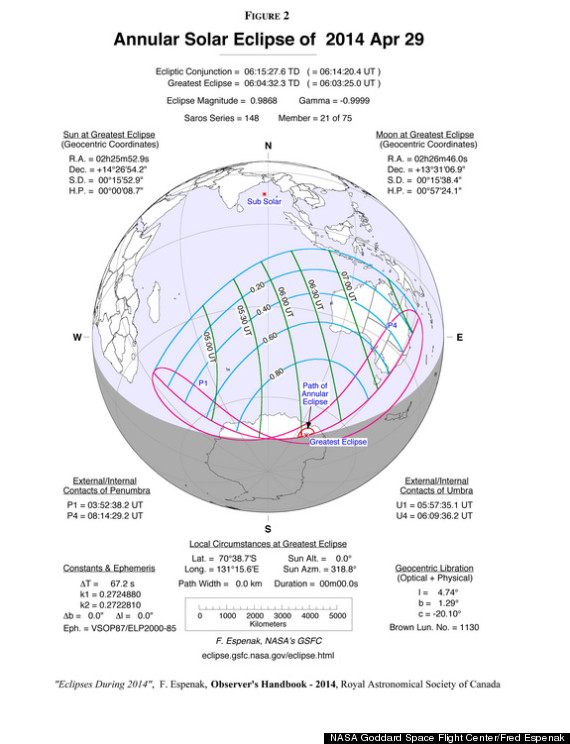
This NASA chart shows the shadow path of the “ring of fire” annular solar eclipse of April 28-29, 2014. The chart, prepared by NASA eclipse expert Fred Espenak, also lists times for the maximum eclipse, as well as start and stop times.
But most people won’t see the whole eclipse. The only place in the world where this annular eclipse will be visible is a small area in Antarctica. However, partial phases of the eclipse will be visible in other places. Most of those areas are in the ocean — rarely traveled ocean, in fact — but the entire continent of Australia will get a good view.
The best view of the eclipse will be from the island state of Tasmania. From Hobart, the capital of Tasmania, the eclipse will begin with the moon taking a tiny nick out of the sun’s edge at 3:51 p.m. local time (0551 GMT). Maximum eclipse will be at 5 p.m. (0700 GMT), and the sun will set at 5:17 p.m. (0717 GMT).
The farther north you go in Australia, the less the moon will cover the sun. In Sydney, the eclipse will begin at 4:14 p.m. and will be at maximum — 52 percent covered — at 5:15 p.m. The sun will set in eclipse two minutes later.
Skywatchers in the western parts of Australia will be able to see the end of the solar eclipse. In Perth, the eclipse begins at 1:17 p.m. (0517 GMT), is at maximum (59 percent) at 2:42 p.m. (0642 GMT), and ends at 3:59 p.m. (0759 GMT).
WARNING: Never look directly at the sun during an eclipse with a telescope or your unaided eye; severe eye damage can result. (Scientists use special filters to safely view the sun.)
Partial solar eclipses have the greatest potential for eye damage because at no time is the sun completely covered by the moon. The sun itself is no more dangerous during an eclipse. The danger comes from people’s desire to look at it, to overcome the natural reflex that forces us to look away from the sun.
The safest way to view a solar eclipse is to project its image. The easiest way to do so is with a pinhole camera. The longer the projection distance from the pinhole to the viewing screen, the larger the sun will appear. Natural pinholes are often formed by gaps between tree leaves, covering the ground beneath with miniature eclipses. A small mirror on a window ledge can project a fine image on the ceiling or far wall, suitable for viewing by a whole room full of people.
You should never attempt to look directly at the sun without a proper solar filter, available from telescope stores, planetariums and science centers. This is especially true if you’re viewing it through binoculars or a telescope. There is no way to create your own safe filter from ordinary materials, so don’t risk it.
Editor’s Note: If you live in the populated visibility path and snap an amazing picture of the April 29 solar eclipse, you can send photos, comments, and your name and location to managing editor Tariq Malik at spacephotos@space.com.
This article was provided to Space.com by Simulation Curriculum, the leader in space science curriculum solutions and the makers of Starry Night and SkySafari. Follow Starry Night on Twitter @StarryNightEdu. Follow us @Spacedotcom, Facebook and Google+. Original article on Space.com.

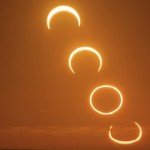
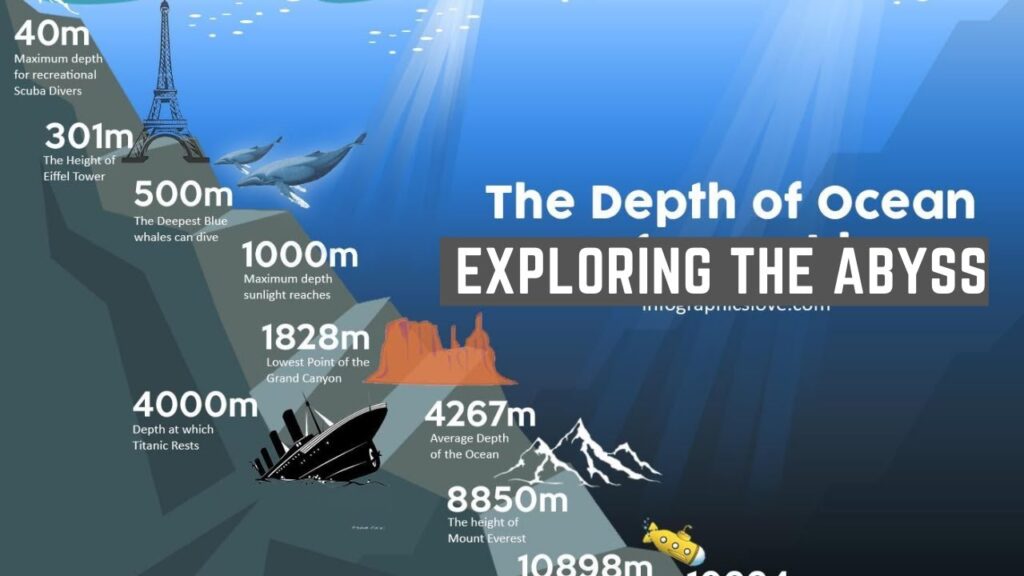

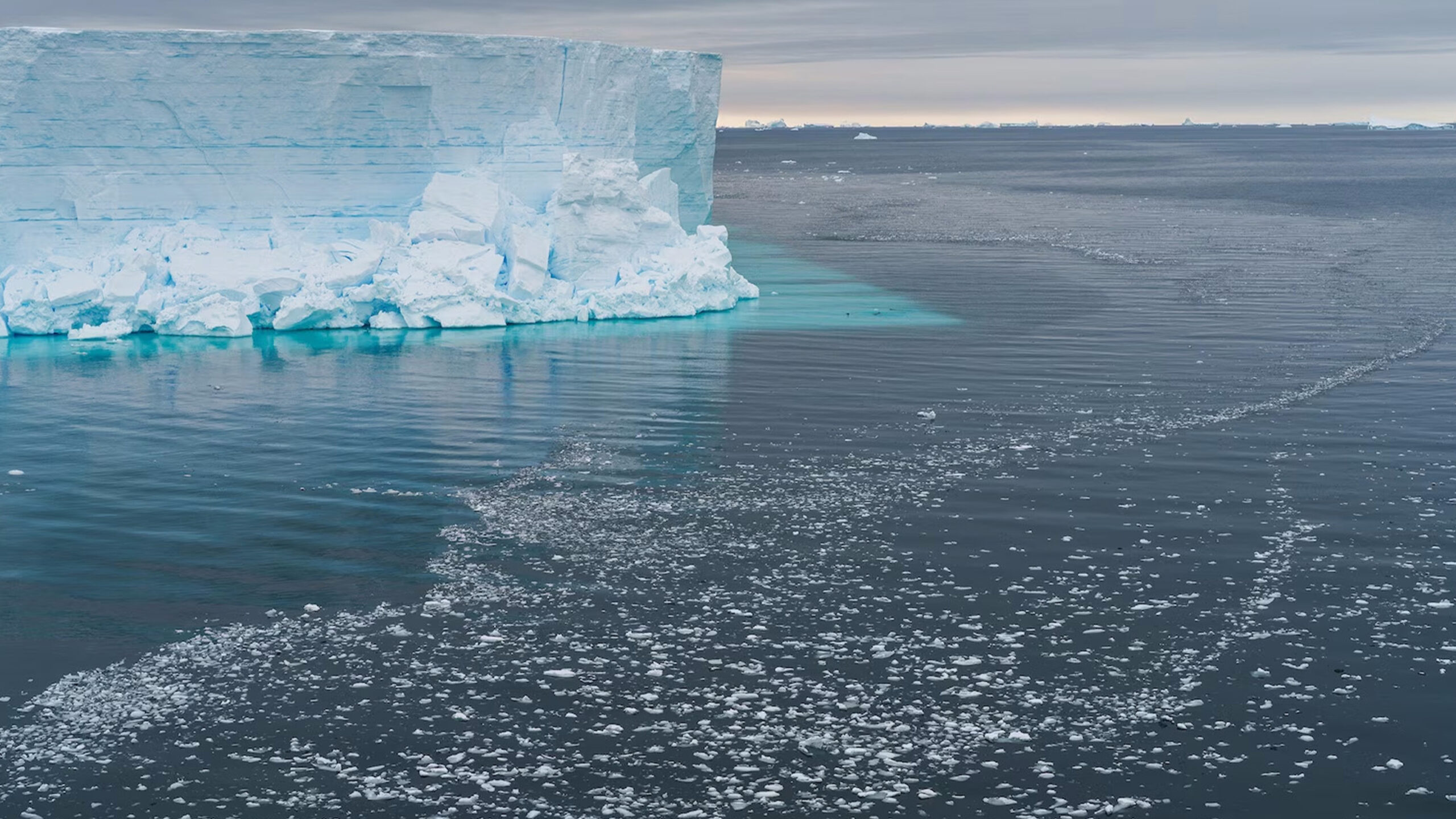
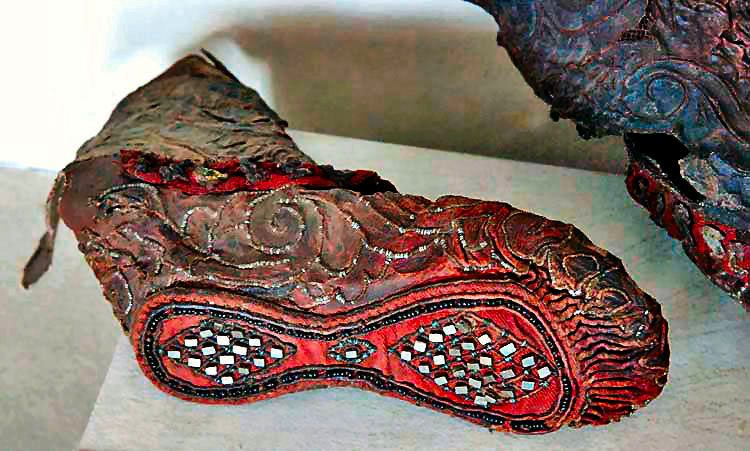
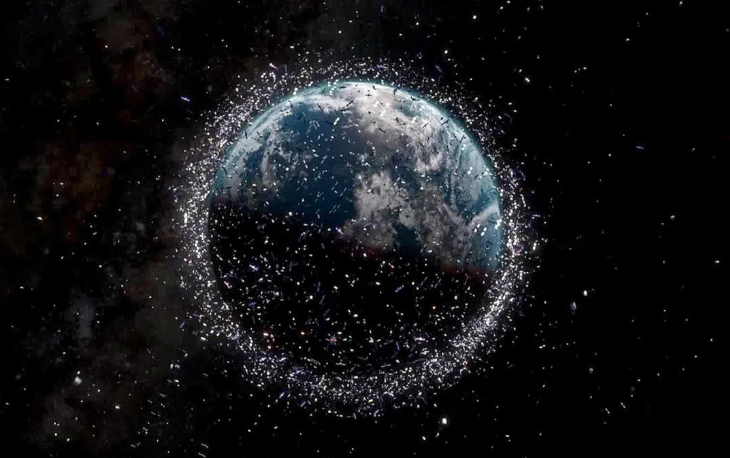
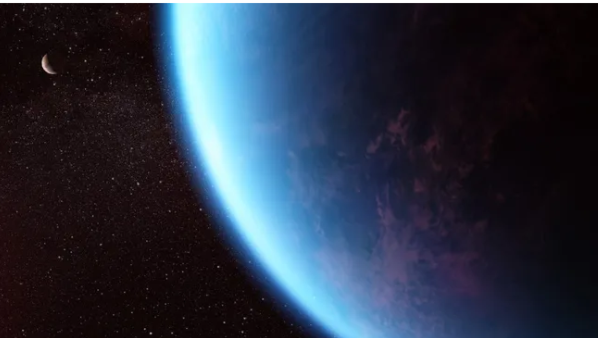
 Photographer Finds Locations Of 1960s Postcards To See How They Look Today, And The Difference Is Unbelievable
Photographer Finds Locations Of 1960s Postcards To See How They Look Today, And The Difference Is Unbelievable  Hij zet 3 IKEA kastjes tegen elkaar aan en maakt dit voor zijn vrouw…Wat een gaaf resultaat!!
Hij zet 3 IKEA kastjes tegen elkaar aan en maakt dit voor zijn vrouw…Wat een gaaf resultaat!!  Scientists Discover 512-Year-Old Shark, Which Would Be The Oldest Living Vertebrate On The Planet
Scientists Discover 512-Year-Old Shark, Which Would Be The Oldest Living Vertebrate On The Planet  Hus til salg er kun 22 kvadratmeter – men vent til du ser det indvendigt
Hus til salg er kun 22 kvadratmeter – men vent til du ser det indvendigt  Superknepet – så blir snuskiga ugnsformen som ny igen!
Superknepet – så blir snuskiga ugnsformen som ny igen!  Meteorite That Recently Fell in Somalia Turns Out to Contain Two Minerals Never Before Seen on Earth
Meteorite That Recently Fell in Somalia Turns Out to Contain Two Minerals Never Before Seen on Earth  Nearly Frozen Waves Captured On Camera By Nantucket Photographer
Nearly Frozen Waves Captured On Camera By Nantucket Photographer  It’s Official: Astronomers Have Discovered another Earth
It’s Official: Astronomers Have Discovered another Earth 